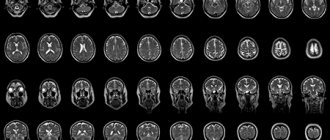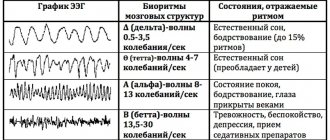| Isthmus of the cingulate gyrus (Brodmann area 29) | |
| Medial surface of the left hemisphere of the brain. (The isthmus is indicated at left center.) | |
| Details | |
| Identifiers | |
| Latin | isthmus gyri cinguli |
| NeuroNames | 163 |
| NeuroLex ID | birnlex_1541 |
| TA98 | A14.1.09.232 |
| TA2 | 5514 |
| F.M.A. | 62502 |
| Anatomical terms of neuroanatomy [edit in Wikidata] | |
The cingulate gyrus begins below the tribunes of the callosum, curves around in front of the knee, runs along the upper surface of the body, and finally turns down behind the splenium, where it is connected by a narrow isthmus
with the parahippocampal gyrus.
Cingulate protocol: taking your hand off the handbrake
Don't argue.
If you are arguing with someone and see that this person has become stubborn, take a break, take a break.
May it last ten minutes, ten hours or ten days! If you can distract yourself from a lose-lose situation in which all participants lose, you can later return to the discussion and solve the problem. A long time ago I realized that there is no need to argue with those who have impaired function of the cingulate system. When a person is “locked in” to some thought or action, logical arguments usually do not help. One of the most effective, in my observations, ways of communicating with the “closed-in” is the following: I briefly state what I want to say. If I see that my interlocutor is beginning to withdraw into his position, I try to change the topic and redirect his attention. This gives his subconscious time to digest what I had to say without confronting this thought. It often turns out that when we return to this conversation some time later, the person accepts my point of view more easily.
This technique often helps in communicating with teenagers. Many of them argue and contradict their elders due to the natural process of growing up and separation from their parents. I suggest parents avoid confrontation with their children by quickly stating their position and switching to another topic. If we are talking about fundamental issues, come back to discuss them later.
One of the best pieces of advice I give to couples with marital problems remains this: “Go to the bathroom.” If you see that your partner is beginning to repeat himself and his cingulate system is becoming increasingly involved in your argument, excuse yourself and say that you need to go to the toilet. Few people would argue with a person who has felt such a natural need, and yet a pause in the argument often turns out to be useful. If your interlocutor goes into a particularly steep dive, take a thicker book with you and don’t go out longer.
Ask and do the opposite
Remember “reverse psychology”? It works well in communicating with people who have a disorder of the cingulate system. But you need to use it carefully. By using “reverse psychology,” you are essentially asking for the exact opposite of what you want. If you want your two-year-old, who is stubborn like all children at that age, to kiss you, tell him: “I don’t want to be kissed.” And now the child asks for permission to kiss you. If you want someone to help you do something, you need to say this: “You probably won’t help me.” Family psychotherapists have developed entire methods of “paradoxical” schemes for working with resistant couples. In these methods, the calculation is made on the couple’s resistance to the therapist’s recommendations. Say, if a couple can't spend enough time together and have sex, the therapist will advise them to never spend time together and definitely not have sex. Many couples are surprised to find that after receiving this advice, they begin to communicate more and make love more often and with such passion that they have not had in many years.
Psychotherapists have long been engaged in giving some patients “paradoxical” recommendations. Such techniques are known under different names: antisuggestion, negative practice, paradoxical intention, method of obfuscation, declaring that the patient is hopeless, advice to limit changes, cause a new exacerbation, therapeutic double-blind method, etc. In principle, they all boil down to this: that the patient is offered the exact opposite of the desired effect. For example, if a person suffers from insomnia, they may tell him: “When you go to bed, try not to fall asleep for as long as possible.” When treating men who were unable to pee in public restrooms due to high anxiety, psychologists L. M. Usher and P. M. Turner advised them to go into public restrooms and completely follow the algorithm: stand in front of the urinal, unbutton your pants, take out your penis, but not write. By repeating the procedure several times, the patients got rid of the fear of natural urination. It seems to me that such tactics are most effective when applied to patients with impaired function of the cingulate system. Every time you need to get some action from such a person, it is best to arrange everything so that he thinks that it is his idea, his initiative. If you ask him directly, you will most likely be disappointed. Involve him in the decision-making process.
For example:
If you want to meet him for lunch, you don't have to ask him to meet you at such and such a time. It’s better to ask what time is convenient for him?
If you want him to hug you, it’s better to say: “You probably won’t hug me now.”
If you want him to go shopping with you, say something like this: “You probably won’t go to the store with me.”
If you want a person to finish a report by next Thursday, say: “You probably won’t be able to finish it by next Thursday.”
If you want to get your child to fulfill a request without a scandal, tell him: “You probably won’t be able to do this without getting upset and arguing.”
Learn to deal with “difficult” children
When dealing with “difficult” children, there are two main tips to remember. Such children are often fixated on negative behavior. If you can find the right approach to them, it can change their whole life. The first tip is this: to break their fixation on obsessive thoughts or actions, which causes them to become stubborn and hostile, try to understand at what point to distract them. Distraction is an effective technique that helps free people with impaired function of the cingulate system from “fixation.” Distract such a child by changing the topic of conversation, switching his attention to physical activity (send him for a walk, offer to play) or to a task that involves distraction exercises.
It is very important for parents of children with impaired cingulate system function to assert their “higher” authority. Parents should not allow confrontational behavior to win. Otherwise, they only develop this tendency in the child, which may well ruin his entire future life. Parents who indulge demands do not teach their child to submit to authority. Therefore, these children have a difficult time at school and in society. The most effective children tend to grow up with authoritarian, strong-minded parents. Just as people with OCD may find it more difficult to resist obsessive thoughts and actions if they give in to them, confrontational behavior in children gets worse if they are given in to it. The sooner you stop your children from this behavior, the better it will be for everyone. To this end, I developed a set of rules for parents, which became the first step in learning how to deal with such children. It is very important to clearly formulate the rules and make it clear that you do not intend to deviate from them (these rules). Here are two rules regarding confrontational behavior.
Do what your parents say the first time.
No arguing with parents.
These rules establish that you, as the parent, have the power and you will not allow your child to argue with you. If you make it a habit to get your children to obey the first time, they will know that this is what is expected of them. If they do not obey, disobedience should be stopped immediately. There is no need to repeat your request a hundred times. In this case, the chances that you will offend your child with a word or action increase many times over. If you asked your child to do something, and he refuses or hesitates, without putting it off “for later,” tell him this: “Choose. You can do it now, or wait and do it later. I don't care. Decide youself". If your child is in no hurry to immediately comply with your request, give him a time out. If necessary, this algorithm can be repeated. In case of disobedience, take action quickly, firmly, without emotion. The more emotional you become, the worse such children behave. Consistency is important here.
The second rule (no arguing with parents) in dealing with confrontational children is extremely important. If you allow such a child to argue with himself, this only strengthens and aggravates his resistance caused by a violation in the cingulate system. Of course, you are interested in listening to your child's opinion.
However, a line must be drawn between expressing one's opinion and arguing. Maybe it makes sense to warn the child: “Of course, we are your parents and want to know your opinion. But if you repeated it more than twice, then this is already an argument.”
This kind of “parental intervention” is always effective if it occurs against the backdrop of a good relationship between parents and child. Parents who develop a “limbic” connection with their child by communicating with him and listening to him are less likely to encounter problems such as confrontational behavior.
Let's summarize what has been said. When dealing with confrontational children, use distraction when necessary while remaining firm and authoritarian. Look how much you quarrel with them. There is no need to quarrel over any issue. Unfortunately, in confrontational children, one or both parents suffer from disorders of the cingulate system, and this only aggravates the problems of such a family. Meanwhile, it often becomes easier when parents show a certain flexibility.
Altruism
If you have read this far, then here is a gift - the best way to reduce hypertonicity of the cingulate gyrus. Early observations of human brain activity showed that when a person performs a merciful act, the activity of the reward system increases. This system in the brain is responsible for the feeling of pleasure, so it turns out that a person, even helping another, still acts in his own interests. This has been proven in experiments on monkeys.
If the monkey acted in its own interests, its orbitofrontal cortex cells, which are responsible for personal gain, were activated. If the macaque gave the juice to another, some neurons in the anterior cingulate cortex, which were silent during the “selfish” act, were activated.
“Altruistic” neurons do not interfere with the pleasure of helping another, but only indicate an additional source of such pleasure. This same area of the brain is involved in social interactions: for example, when a loved one gets into a difficult situation, it is the cingulate gyrus that “worries” about him.
Death.
Thinking about your death and the finitude of existence perfectly reduces the tone of the cingulate gyrus. I recommend it. published
Author: Andrei Beloveshkin
PS And remember, just by changing your consumption, we are changing the world together! © econet
What does training and the cingulate gyrus of the brain have to do with it?
It has been noted that regular physical exercise contributes to better functioning of the cingulate gyrus of the brain. And in general, physical education is good for the whole brain, I recommend reading Daniel Amen. Even a simple squat requires quickly switching from one muscle group to another. Most likely, multi-joint exercises are useful in this aspect.
Biochemical changes in the bloodstream during exercise, when tryptophan levels in the blood increase, also have a positive effect. Tryptophan is a relatively small molecule, so it often has to compete with larger amino acid molecules to enter the brain. During physical activity, the body uses these “large” amino acids for muscle metabolism and thus their concentration in the blood decreases. At this time, tryptophan can enter the brain in increased quantities through the blood-brain barrier. To improve the functioning of the cingulate gyrus of the brain, serotonin is needed, and tryptophan is the raw material for the synthesis of serotonin. Well, besides, a pleasant bonus of serotonin is a good mood and sleep. However, there is a small nuance - the synthesis of serotonin occurs only in sunlight. So, sun, air and exercise are the way to... many improvements in your life.
It cannot be ruled out that the cingulate gyrus of Schwarzenegger’s brain worked well before, and he further increased its effectiveness in the gym.
He is called a successful man. CC BY-SA 3.0/photo Georges Biard
Well, do you think Arnold was lucky from birth or did he train his own luck?











